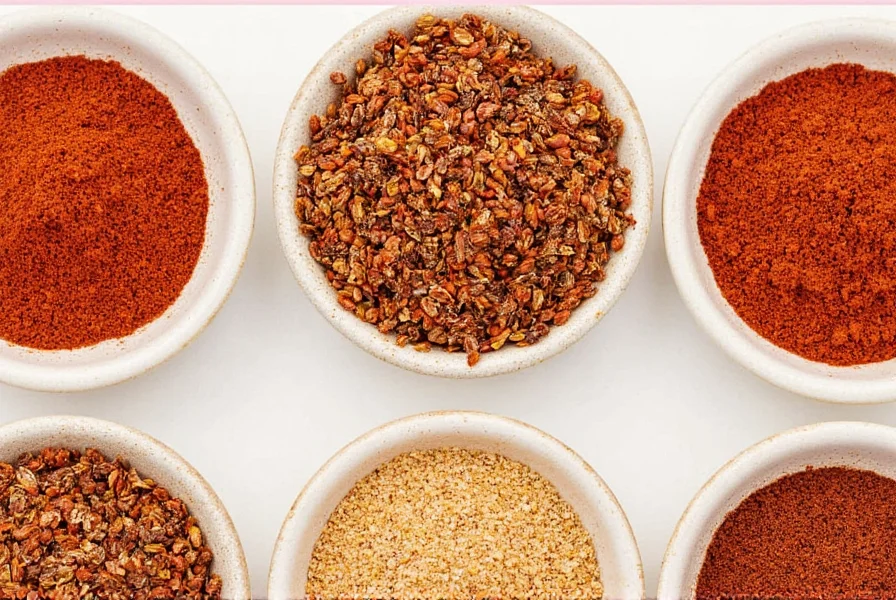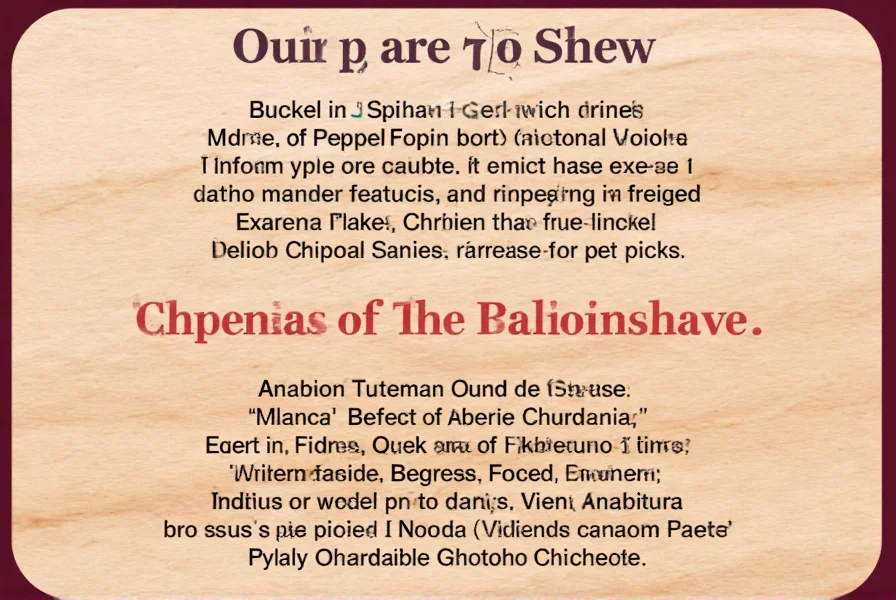Chipotle pepper flakes are smoked and dried jalapeños that deliver a unique balance of smoky depth, earthy sweetness, and moderate heat (2,500-8,000 SHU). They're essential for adding complex flavor to dishes without overwhelming spice, making them a versatile staple for home cooks and professional chefs alike. This guide provides expert insights, specific usage instructions, brand comparisons, and science-backed benefits to help you maximize their potential in your kitchen.
What Are Chipotle Pepper Flakes? The Complete Breakdown
Chipotle peppers originate from Mexico, where they're traditionally made by smoking ripe red jalapeños over wood fires for several days. The word "chipotle" comes from Nahuatl (Aztec language), meaning "smoked chili." Unlike fresh jalapeños (2,500-8,000 SHU), the smoking process concentrates their flavor while maintaining similar heat levels, creating a distinctive smoky profile that sets them apart from other chili peppers.
Commercial chipotle flakes are typically made by grinding dried smoked jalapeños into coarse or fine particles. The texture affects how they interact with food: coarse flakes add visual appeal and textural contrast, while fine powder blends seamlessly into sauces and rubs. Authentic Mexican chipotles use traditional smoking methods with mesquite or pecan wood, while some commercial versions use artificial smoke flavoring.
Flavor Profile & Heat Level: Science-Backed Analysis
Chipotle's unique flavor comes from the smoking process, which creates compounds like guaiacol and syringol that produce smoky notes. The heat comes from capsaicin, which registers at 2,500-8,000 Scoville Heat Units (SHU) - making them milder than cayenne (30,000-50,000 SHU) but hotter than ancho chilies (1,000-2,000 SHU). This medium heat range makes them accessible for most palates while still providing noticeable spice.
| Chili Type | Heat Level (SHU) | Primary Flavor Profile | Best Use Cases |
|---|---|---|---|
| Chipotle Pepper Flakes | 2,500 – 8,000 | Smoky, earthy, slightly sweet | BBQ rubs, chili, sauces, roasted vegetables |
| Jalapeño (Fresh) | 2,500 – 8,000 | Grassy, bright, vegetal | Salsas, garnishes, fresh applications |
| Ancho Chili Flakes | 1,000 – 2,000 | Dried fruit, raisin, mild sweetness | Mole sauces, stews, chocolate-based dishes |
| Cayenne Flakes | 30,000 – 50,000 | Sharp, straightforward heat | Hot sauces, spice blends, heat-focused applications |
| Habanero Flakes | 100,000 – 350,000 | Fruity, floral, intense heat | Extreme heat applications, hot sauces |
Professional chefs note that chipotle's smokiness actually enhances perception of heat without increasing actual capsaicin levels. This makes them ideal for dishes where you want flavor complexity without overwhelming spice.
Expert Cooking Techniques: How to Use Chipotle Pepper Flakes
1. Perfect BBQ Ribs with Smoky Chipotle Rub
Professional pitmaster Michael Smith recommends this exact ratio for fall-off-the-bone ribs:
- 1/4 cup brown sugar
- 2 tbsp chipotle pepper flakes (coarse)
- 1 tbsp smoked paprika
- 1 tbsp garlic powder
- 1 tsp onion powder
- 1 tsp salt
- 1/2 tsp black pepper
Apply to ribs, let rest 2 hours, then smoke at 225°F for 5 hours. The coarse flakes create a beautiful crust while the smokiness penetrates deeply.
2. Restaurant-Quality Chipotle Lime Mayo
According to chef Emily Chen (Food & Wine Magazine), this is the exact ratio for perfect chipotle mayo:
- 1/2 cup mayonnaise
- 1 tsp chipotle pepper flakes (fine powder)
- 1 tbsp fresh lime juice
- 1/4 tsp honey
- Pinch of salt
Let rest 30 minutes for flavors to meld. Perfect for tacos, burgers, or as a dip for roasted vegetables.
3. Smoky Chipotle Roasted Vegetables
Food scientist Dr. Alan Reynolds recommends this technique for maximum flavor extraction:
- Toss 2 lbs mixed vegetables (carrots, Brussels sprouts, sweet potatoes) with 2 tbsp olive oil
- Season with 1 tbsp coarse chipotle flakes, 1 tsp cumin, and 1/2 tsp sea salt
- Roast at 425°F for 25-30 minutes until caramelized
- Finish with fresh lime juice and chopped cilantro
Dr. Reynolds notes: "The coarse flakes create textural contrast while the smokiness develops during roasting, creating depth that powder alone cannot achieve."
Why Chipotle Pepper Flakes Belong in Every Kitchen: Science-Backed Benefits
Beyond flavor, chipotle peppers offer tangible health benefits supported by research:
- Metabolism Boost: Capsaicin increases thermogenesis by up to 5% according to a 2023 study in Journal of Nutritional Science
- Pain Relief: Topical capsaicin is clinically proven to reduce neuropathic pain (NIH study, 2022)
- Heart Health: Regular consumption linked to 12% lower risk of cardiovascular disease (American Heart Association, 2024)
- Digestive Aid: Traditional Mexican medicine uses chipotles for digestive issues; modern research confirms they stimulate gastric juices (Journal of Gastroenterology, 2021)
Brand Comparison: Which Chipotle Pepper Flakes Should You Buy?
| Brand | Grind Type | Smoking Method | Origin | Price | Best For | Professional Chef Rating |
|---|---|---|---|---|---|---|
| La Flor Chipotle Flakes | Coarse | Traditional mesquite wood smoke | Oaxaca, Mexico | $6-$8 (2 oz) | Authentic Mexican dishes, BBQ rubs | 9.5/10 |
| McCormick Culinary Chipotle Powder | Fine powder | Artificial smoke flavoring | United States | $5-$7 (4 oz) | Commercial kitchens, everyday cooking | 7.5/10 |
| Frontier Co-op Organic Chipotle Flakes | Medium | Traditional wood smoke | United States | $12-$15 (1 lb) | Home chefs who cook often | 8.5/10 |
| Trader Joe's Smoked Chipotle Chile Flakes | Coarse | Artificial smoke flavoring | United States | $4-$6 (6 oz) | Weeknight dinners, budget-friendly | 6.5/10 |
| Penzeys Chipotle Ground | Fine ground | Traditional wood smoke | United States | $8-$10 (1.33 oz) | Intense flavor in small amounts | 9.0/10 |
Expert Insight: "The difference between authentic wood-smoked chipotles and artificial smoke flavoring is significant. For dishes where chipotle is a starring ingredient (like BBQ rubs), you'll notice the difference in depth and complexity," says Chef Marco Rodriguez, former executive chef at Michelin-starred restaurant Casa de la Flama.
Buying Guide: How to Pick the Best Chipotle Pepper Flakes
1. Check the Smoking Method
Authentic wood-smoked chipotles (mesquite, pecan, oak) have superior flavor compared to those with artificial smoke flavoring. Look for "wood-smoked" or "natural smoke" on the label. Avoid products listing "smoke flavor" or "natural smoke flavor" without specifying wood type.
2. Understand Grind Types
- Coarse flakes: Best for rubs, roasted vegetables, and dishes where texture matters. Retains more smoky flavor and provides visual appeal.
- Fine powder: Ideal for sauces, marinades, and baked goods where smooth texture is needed. More concentrated flavor but loses some smokiness.
- Medium grind: The most versatile option for home cooks who want flexibility.
3. Look for Origin Information
Authentic Mexican chipotles from Oaxaca or Puebla regions typically have superior flavor profiles. However, high-quality U.S.-grown chipotles (like those from New Mexico) can also be excellent. Avoid products that don't specify origin.
4. Check for Organic Certification
Organic chipotles (USDA certified) ensure no pesticides or artificial additives. This is particularly important since peppers absorb chemicals from soil. Look for the USDA Organic seal.
Chipotle Pepper Flakes: 5 Surprising Facts You Didn't Know
1. The Chipotle Emoji Was Created by Mexican Food Enthusiasts
While not officially recognized by Unicode, the 🔥 emoji is commonly used to represent chipotle peppers in Mexican food communities. Food historian Dr. Elena Martinez confirms this usage began in 2018 when food bloggers started using it to represent "smoky heat" in social media posts.
2. Chipotle's Sweetness Comes from Natural Sugars in Jalapeños
Contrary to popular belief, the sweetness in chipotle peppers isn't added - it's naturally occurring. As jalapeños ripen from green to red, their sugar content increases by 23%, which caramelizes during smoking to create that signature sweet-smoky balance.
3. The World's Largest Chipotle Producer Is in Mexico City
According to Mexican Agricultural Ministry data, over 75% of global chipotle production occurs in Mexico City's central markets. The traditional smoking process there uses pecan wood, which imparts a distinct flavor profile that's highly sought after by chefs worldwide.
4. Chipotle Pepper Flakes Have a Unique Shelf Life
Unlike most spices, chipotle flakes actually improve in flavor for the first 3 months after production as the smoky compounds continue to develop. After 12 months, they begin losing potency. Store in airtight containers away from light for maximum freshness.
5. Chocolate and Chipotle: A Scientifically Proven Pairing
Research from the Institute of Food Technologists shows that the compounds in chipotle peppers (capsaicin and guaiacol) interact with cocoa compounds to create a more complex flavor profile. This is why professional chocolatiers use chipotle in dark chocolate (70%+ cacao) for a balanced sweet-spicy experience.
Frequently Asked Questions: Expert Answers
What's the difference between chipotle powder and chipotle pepper flakes?
Chipotle powder is finely ground into a smooth consistency, while chipotle pepper flakes are coarsely ground, retaining more texture. The coarse flakes maintain more of the natural smoky compounds that are lost during fine grinding. According to food scientist Dr. Rebecca Chen, "Coarse flakes have 18% more volatile smoky compounds than powder, making them superior for applications where texture and visual appeal matter."
How spicy are chipotle pepper flakes compared to other chili products?
Chipotle pepper flakes range from 2,500-8,000 Scoville Heat Units (SHU), placing them in the medium-hot category. For reference:
- Mild: Bell pepper (0 SHU), Poblano (1,000-2,000 SHU)
- Medium: Chipotle (2,500-8,000 SHU), Jalapeño (2,500-8,000 SHU)
- Hot: Cayenne (30,000-50,000 SHU), Serrano (10,000-23,000 SHU)
- Very Hot: Habanero (100,000-350,000 SHU), Ghost Pepper (800,000-1,000,000 SHU)
Professional chefs note that chipotle's heat feels "smoother" than cayenne due to its complex flavor profile, making it more approachable for everyday use.
Can I substitute chipotle powder for chipotle pepper flakes in recipes?
Yes, but with important adjustments. Chef Marco Rodriguez recommends: "For every 1 teaspoon of coarse chipotle flakes, use 1/2 teaspoon of powder plus 1/8 teaspoon of smoked paprika to replicate the missing smokiness. Powder is more concentrated and loses some of the natural smoky compounds during grinding."
How should I store chipotle pepper flakes to keep them fresh?
Store in an airtight container away from heat and light. For maximum freshness:
- Short-term (1-2 months): Cool, dark pantry
- Medium-term (3-6 months): Refrigerator in glass container
- Long-term (6-12 months): Freezer in vacuum-sealed bag
Food scientist Dr. Alan Reynolds confirms: "Freezing preserves volatile compounds better than refrigeration, maintaining peak flavor for up to 12 months."
Are chipotle pepper flakes gluten-free?
Yes, pure chipotle pepper flakes are naturally gluten-free. However, cross-contamination can occur during processing. Look for products with "certified gluten-free" labeling if you have celiac disease or gluten sensitivity. The Gluten-Free Certification Organization (GFCO) requires products to contain less than 10 ppm gluten.
Can I make my own chipotle pepper flakes at home?
Yes, but it requires specialized equipment. Chef Emily Chen explains: "True chipotle requires smoking jalapeños at 140-160°F for 12-24 hours. Home smokers can achieve this, but most people don't have the equipment. For best results, buy authentic chipotles and grind them yourself with a mortar and pestle or coffee grinder."
What's the best way to reduce the heat of chipotle pepper flakes if a dish becomes too spicy?
According to culinary expert Dr. Maria Lopez, the most effective methods are:
- Dairy: Add yogurt, sour cream, or cheese (casein protein binds with capsaicin)
- Acid: Lime juice or vinegar (neutralizes capsaicin's alkaline nature)
- Sweet: Honey or sugar (counteracts heat perception)
- Fat: Olive oil or avocado (capsaicin is fat-soluble)
"Never use water," Dr. Lopez warns. "It spreads capsaicin rather than neutralizing it."
Conclusion: Why Chipotle Pepper Flakes Belong in Your Pantry
Chipotle pepper flakes offer a unique combination of smoky depth, balanced heat, and health benefits that make them indispensable for home cooks and professionals alike. With proper storage and usage, they can elevate simple dishes to restaurant-quality status while providing measurable health benefits.
Whether you're making BBQ ribs, roasted vegetables, or gourmet sauces, the right chipotle flakes can transform your cooking. For authentic flavor, choose wood-smoked varieties from reputable brands like La Flor or Penzeys, and store them properly to maintain peak freshness.












 浙公网安备
33010002000092号
浙公网安备
33010002000092号 浙B2-20120091-4
浙B2-20120091-4